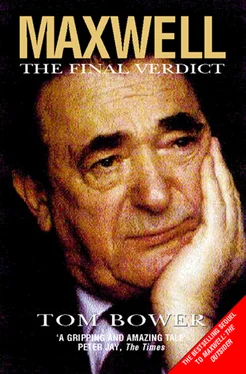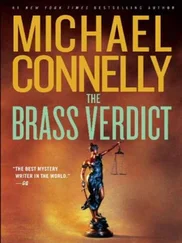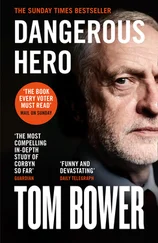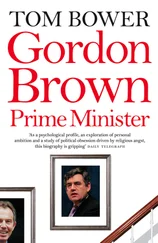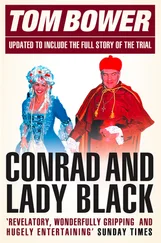Inevitably there was confusion about responsibility for the management of First Tokyo’s £60 million – confusion which was very much Robert Maxwell’s intention. First Tokyo had a contract with London & Bishopsgate International Investment Management, who were to manage the fund in accordance with the wishes of First Tokyo’s board of directors. LBIIM was owned by London & Bishopsgate Holdings, which in turn was owned by Headington Hill Investments, Maxwell’s private company ultimately owned by the Liechtenstein foundation. But it was the entirely distinct LBI which was undertaking the stock lending. This confusion was ignored by McInroy, not least because during the first year the profits seemed to exceed expectations.
McInroy’s legal advisers seem also not to have appreciated the deft self-protection of LBIIM’s contract with First Tokyo. While one clause at the top of the agreement permitted stock lending, another, much later clause allowed LBIIM to stock lend ‘in house’ for a ‘fair price’. Astutely, Maxwell and his cohorts had covered themselves in the event of future recriminations.
Unknown to McInroy, soon after the stock lending was approved Maxwell allowed Trachtenberg to use First Tokyo’s shares in an unauthorized manner. First Tokyo’s stock was being lent, not in an orthodox way on the open market, but to Maxwell privately, that is to London & Bishopsgate Holdings. And the collateral for the prime Japanese stock was not cash but MCC shares. To the Maxwells, the beauty of the operation was that First Tokyo’s shares were never sold, so preserving the myth that the fund was inviolate and untouched. The only risk was to First Tokyo’s innocent investors. The evidence suggests that by February 1990 Lord Donoughue ought to have suspected the unannounced use of those shares. In September of that year, Kevin would offer some of those First Tokyo shares to Julie Maitland of Crédit Suisse as collateral for the £50 million private loan.
By November 1990, as Maxwell vainly searched for relief from the recession and from the rising interest rates on his total debt of $3.5 billion, First Tokyo’s £60 million was only a small part of his requirements. For more than a year, he had also been stock lending pension fund shares using the technique proposed by Trachtenberg and Smith. During summer 1989, on the Maxwells’ instructions, Trachtenberg had negotiated the use of pension fund shares to raise cash from John Di Rocco, head of Lehman Brothers’ International securities lending department. To conceal the scheme, the contract signed by Kevin on BIM’s behalf was made complicated. Lehmans would be given shares from BIM’s portfolio, and in exchange would give Treasury bills to Maxwell. Maxwell would immediately sell the bills back to Lehmans, who would pay him in cash. The end result would be that Maxwell had cash and Lehmans had the security of the pension fund shares. In theory, the pension funds would retrieve their shares after buying back the Treasury bills. In the meantime, the impression was preserved that the pension funds still owned the shares unencumbered.
There was one major obstacle to overcome to obtain that cash. On each share certificate, the owner was registered as BIM. To use those pension fund shares, Maxwell needed to invent a cover story to explain his entry into such an unusual transaction.
The reason provided by Trachtenberg to Di Rocco was that BIM needed cash so that it could reinvest the money in shares which would produce higher returns than its existing portfolio, while simultaneously retaining the investment benefit of the shares it pledged. To Maxwell’s delight, Di Rocco accepted the business. Whether the banker realized by specific inquiries that BIM was the manager of pension fund assets would remain uncertain and be subsequently contested. But he and his superiors did realize that the arrangement was ‘purely a funding exercise’, and their suspicions ought to have been aroused because the circumstances were so unusual. It was unusual in two ways: first, the bank was to pay the cash into Maxwell’s private accounts; and second, neither Trachtenberg nor Andrew Smith was a director of BIM. Indeed, Trachtenberg said he represented LBIIM, which was acting as BIM’s agent.
There was one final hurdle. Before the pension fund shares could be used for stock lending, Trachtenberg required Trevor Cook’s consent. At the end of October 1989, after reading LBI’s terms for stock lending, Cook, BIM’s manager, signed an agreement. But that agreement – between BIM and LBI – was different from the contract with Lehmans signed by Kevin on LBI’s behalf, which was not for stock lending but for a loan.
To Cook, everything appeared normal. Working in an open-plan office in Dorrington Street with files marked ‘Stock lending accounts’, he and his deputy Jeff Highfield received monthly accounts from LBI recording the value of the stock lending: Cook in turn would bill LBI for the agreed 1.75 per cent fee. Cook’s willingness to be helpful made the Maxwells’ task much easier. He never asked to see the contracts.
Throughout 1989, with Cook’s agreement, Maxwell had also been personally borrowing increasing amounts of money from BIM, rising from £5 million to £22.5 million. To extinguish the debt, Maxwell ‘sold’ to BIM privately owned shares, but publicly he did not reveal the change of ownership. ‘We’ll always give the pension funds first refusal to earn profits from our share deals,’ Maxwell had told Cook. To the manager, the offer appeared generous. Apparently he remained unsuspicious even when Maxwell’s £22.5 million borrowing during 1989 cost the pension funds £510,000.
Having established Cook’s willingness to accept directives, Maxwell summoned him in January 1990. ‘I have decided it would be in BIM’s interest to buy more MCC shares,’ he said. ‘The price is certain to rise.’ Cook agreed, without questioning Maxwell’s misplaced confidence. BIM would pay £63.2 million for MCC shares owned by Maxwell personally. Cook not only agreed to the ‘offer’ but did not demand that the shares be registered in BIM’s name. Instead, the shares remained registered as Maxwell’s property, and he borrowed another £26 million of the pension funds’ money to finance MCC. Cook would subsequently explain, ‘I didn’t realize the ownership could be abused.’
That March, Maxwell called in Cook twice more. The price of MCC shares was falling despite his prediction two months earlier and he wanted to push it back up. ‘I think it would be beneficial for BIM to buy more MCC shares,’ he said. Two deals were concluded, which were to lose the pension funds £7.4 million. On the 20th, BIM purchased a call option on 10 million MCC shares through Sheinberg at Goldman Sachs. Days before the end of the financial year, BIM paid £20 million for the shares, £2.4 million more than their worth, to boost MCC’s price. On 29 March, BIM sold 7.9 million MCC shares through Goldmans. In the second deal, BIM bought a call option from Goldmans on a further 10 million MCC shares for £18.9 million. One month later, the deal was booked to BIT (Bishopsgate Investment Trust, the nominee company used by Maxwell to retain pension fund shares and cash). The option, exercised on 29 June, cost BIM £5 million.
On 31 March 1990, the end of the financial year, Maxwell’s debt to the pension fund was still £13.5 million, so to remove it from the annual accounts he repaid it. The following day, he withdrew the money again. Thereafter his use of pension fund money rocketed. By 29 June, he had taken £105 million from BIM. To settle that debt, he told Cook that he was ‘selling’ to the pension funds his private stake in Invesco MIM and 5.4 million shares in Scitex, an Israeli high-tech company producing imaging systems for the publishing industry. Maxwell had bought 9.59 million Scitex shares (after rights issue) in December 1988 for $39 million or £24 million. Their value would rise to $220 million. The shares Maxwell offered Cook represented three-quarters of his stake in the company and would be worth £102 million.
Читать дальше
